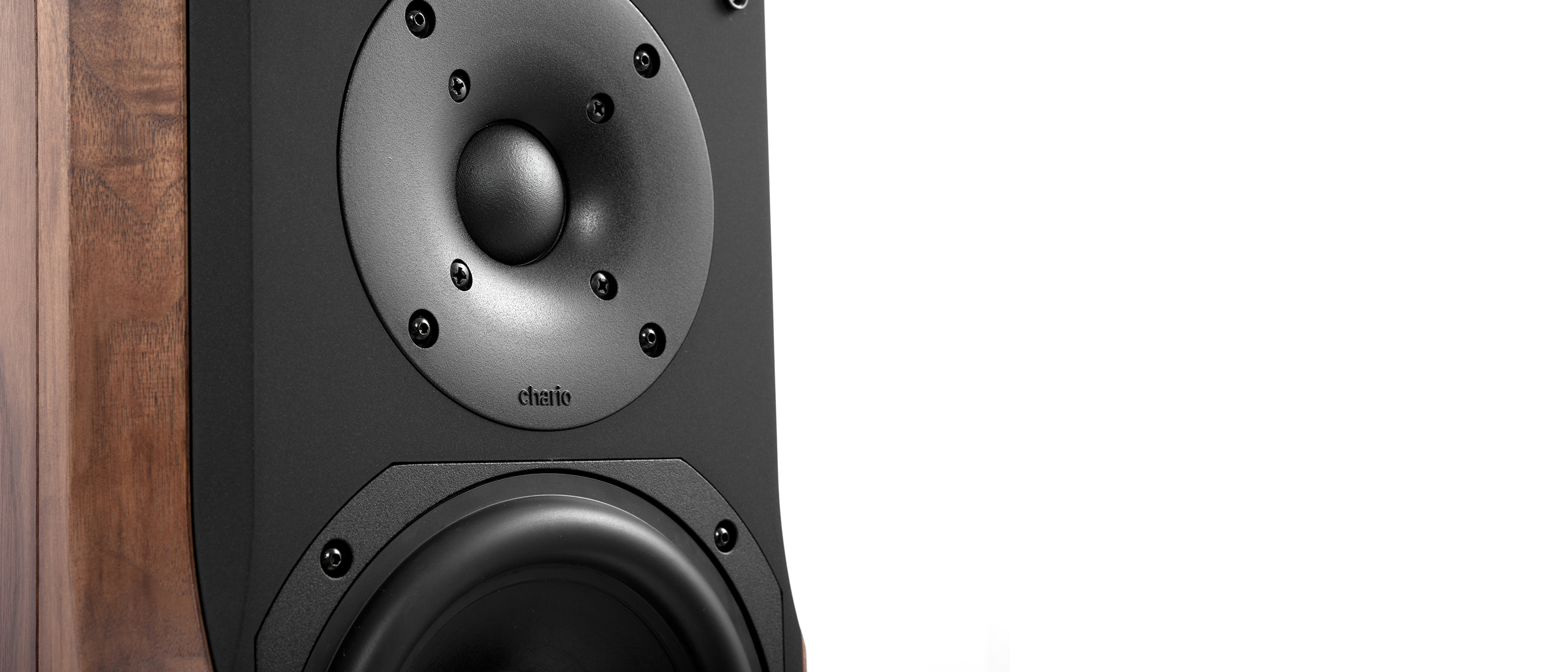What Hi-Fi? Verdict
The Delphinus bookshelf speakers from Chario's Constellation Mk II range offer terrific sound quality in a superbly styled housing and won't hit your wallet nearly as hard as they deserve to.
Pros
- +
Super efficient
- +
Superb mid-range
- +
Excellent fit and finish
Cons
- -
Single choice of finish
- -
Lack of bi-wiring
Why you can trust What Hi-Fi?
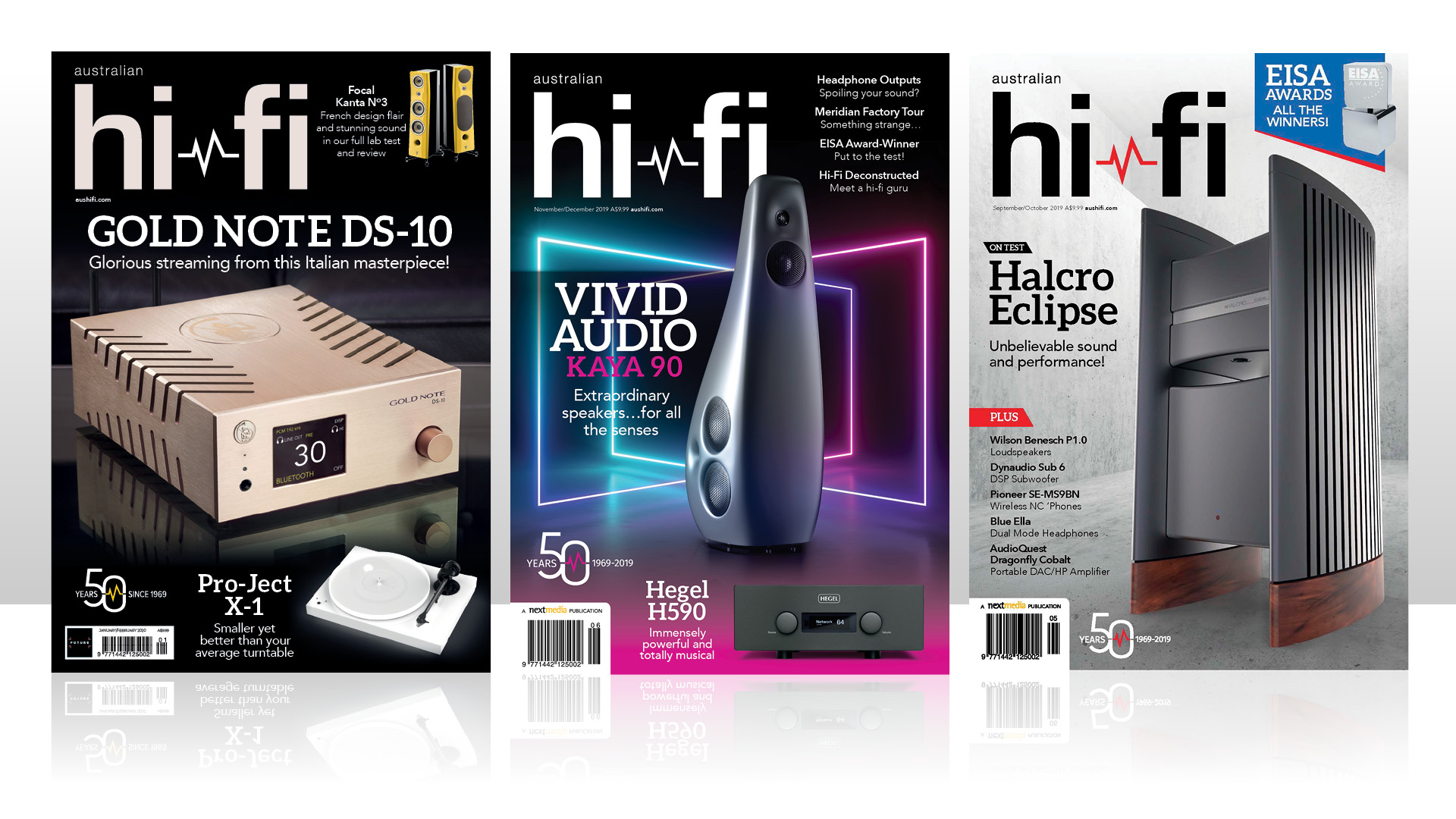
This review and test originally appeared in Australian Hi-Fi magazine, one of What Hi-Fi?’s sister titles from Down Under. Click here for more information about Australian Hi-Fi, including links to buy individual digital editions and details on how to subscribe.
Some manufacturers are a little vague about the rooms in which they think their loudspeakers will perform at their best, and the amplifier power most suited to their capabilities. Not Italian manufacturer Chario.
For its Constellation II Delphinus model, it specifies: ‘The size of the ideal listening environment should not be less than 9 square metres and not more than 20 square metres. A carpeted floor in front of the speakers is recommended. The minimum power amplification suggested to fully exploit the characteristics of the speaker is 30-watts per channel into 4Ω.’
That’s pretty specific, except for one thing, which is that the measurement is in square metres, rather than cubic metres. We can only assume that all Italian homes have ceilings of exactly the same height, which is the only way a ‘square metre’ specification could ever be accurate. Currently, there are four models in Chario’s ‘Constellation II’ range, all of which use the same 38mm tweeter as the Delphinus. The other models are the Constellation Lynx, a two-way bookshelf with a 130mm bass/midrange driver, the floor-standing three-way Cygnus, which has a 130mm bass driver and 130mm midrange driver, and the floor-standing three-way Pegasus, which has a 160mm bass driver and a 160mm midrange driver.
As you’ve no doubt already guessed, Delphinus, Lynx, Cygnus and Pegasus are all constellations of stars. The Delphinus constellation (its name means ‘dolphin’ in Latin, represents the dolphin sent by the sea god Poseidon to find Amphitrite, the Nereid he wanted to marry and was first catalogued by the Greek astronomer Ptolemy in the 2nd century.
It’s interesting that Chario named only one of its other models in the Constellation II series after one of the other neighbouring constellations (Aquarius, Aquila, Equuleus, Pegasus, Sagitta, and Vulpecula) and instead used the names of the constellations of Cygnus and Lynx, which are light-years away, instead.
The original Constellation line, which ceased production in 2016, featured an extra model, the Ursa Major.
Currently, there are four models in Chario’s ‘Constellation II’ range, all of which use the same 38mm tweeter as the Delphinus. The other models are the Constellation Lynx, a two-way bookshelf with a 130mm bass/midrange driver, the floor-standing three-way Cygnus, which has a 130mm bass driver and 130mm midrange driver, and the floor-standing three-way Pegasus, which has a 160mm bass driver and a 160mm midrange driver.
As you’ve no doubt already guessed, Delphinus, Lynx, Cygnus and Pegasus are all constellations of stars. The Delphinus constellation (its name means ‘dolphin’ in Latin, represents the dolphin sent by the sea god Poseidon to find Amphitrite, the Nereid he wanted to marry and was first catalogued by the Greek astronomer Ptolemy in the 2nd century.
It’s interesting that Chario named only one of its other models in the Constellation II series after one of the other neighbouring constellations (Aquarius, Aquila, Equuleus, Pegasus, Sagitta, and Vulpecula) and instead used the names of the constellations of Cygnus and Lynx, which are light-years away, instead.
The original Constellation line, which ceased production in 2016, featured an extra model, the Ursa Major.
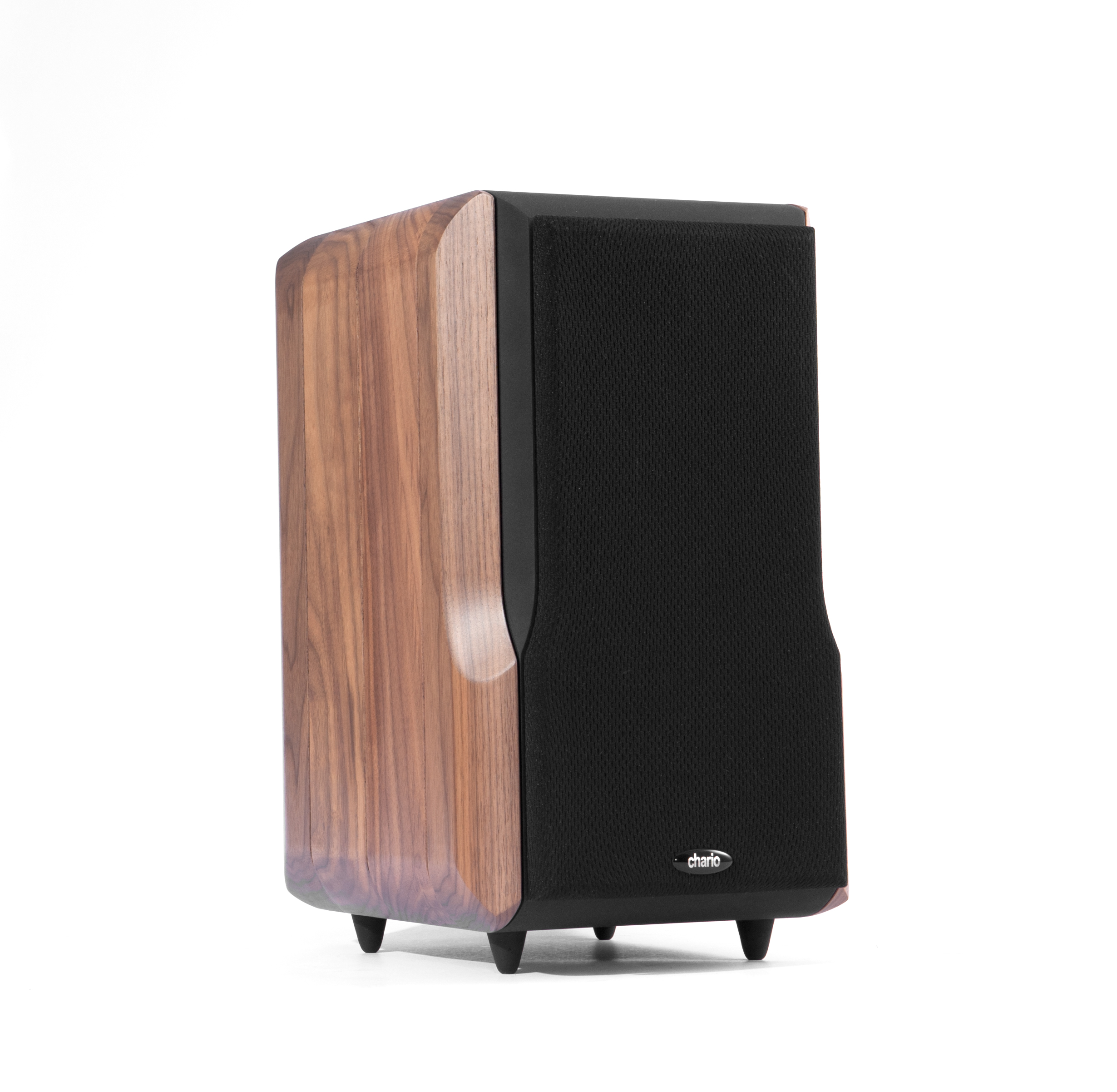
The equipment
Chario was founded in Milan, Italy, in 1975 by Carlo (Charlie) Vicenzetto and Mario Murace, who combined parts of their first names (the ‘Cha’ from Charlie and the ‘rio’ from Mario) to create the unusual company name.
Although Vicenzetto retired a few years ago, Murace still works as one of the company’s audio engineers. Alessandro Migliorini, one of the company’s three new owners, says that as far as he knows, Chario is the only audio company in the world that has been operating for more than 40 years that has had the same audio engineer since its inception.
Chario is an entirely home-grown Italian manufacturer, though its manufacturing operations are fragmented right across that country, with its headquarters located in Vimercate, a city around 20km north-east of Milan, and a small factory in another town close to Vimercate. There’s also a larger factory near Vicenza where all the cabinetry is made. All the drivers used by Chario are made in a factory near Ancona, on Italy’s eastern coast.
The chassis of the Delphinus’ bass/midrange driver chassis is 202mm at its widest part, but the moving diameter is 160mm and the most important dimension – the Thiele/Small diameter – is 146mm, which gives an effective cone area (Sd) of 168m².
The cone is made from a paper compound, while the cone suspension, which has a normal ‘traditional’ roll surround, is made from a rubber compound. The central dustcap is dished, rather than domed, which gives a much cleaner look. The driver chassis is recessed into the front baffle to assist with dispersion.
The Delphinus’s tweeter has a 38mm coated fabric dome that’s driven at its periphery by a voice coil driven by a standard ferrite magnet. The large (130mm diameter) tweeter face plate doubles as a horn, which improves the efficiency of the tweeter while at the same time also improving dispersion. Like the bass/midrange driver, the tweeter face plate is secured to the baffle by star-headed wood screws, rather than by bolt/nut fixings, and is also recessed into it.
Rather unusually for a standmount/bookshelf bass reflex design, the Chario Delphinus’ bass reflex port is located underneath the cabinet. It’s 67mm in diameter, 92mm long and has neither a flared exit nor a flared entry. This ‘underside’ location of the port means that it is essential that either the rubber conical feet supplied with the Delphinus – or the threaded spiked feet that are also supplied – be fitted to ensure the bass reflex port can perform its designed task of reinforcing and extending the speaker’s bass response.
Using the rubber feet delivers a 20mm ‘gap’ between the bottom of the speaker cabinet and the surface it’s sitting on. Using the feet also means that the top of the cabinet is 415mm above that surface – slightly more than identified by Chario’s specification. (Similarly, Chario’s specification for cabinet depth, of 330mm, does not take into account the depth of the grille or the extent to which the speaker terminals protrude from the rear of the cabinet. If you factor these into the dimensions, the total cabinet depth increases to 345mm.)
The rear terminals are of a design we cannot recall seeing previously, but are gold-plated multi-way types that accept banana plugs, spades, ring connectors and bare wire. They’re on 35mm centres, so you can’t use standard dual-Pomona plugs. Only a single set is fitted, so bi-wiring and bi-amping are out.
The speaker grille is wonderfully open, as the black acoustically transparent cloth is stretched over a wooden frame that has only a very narrow periphery: there are no cross-struts. It’s secured to the grille via the post-and-socket technique, with the posts fixed to the grille frame.
The Chario Delphinus’ cabinet is particularly attractive and not completely unlike those made by Sonus faber… which is perhaps not so surprising since both are Italian companies.
According to Migliorini, all the wood used in Chario speakers hails from Italy, the side panels are finished by hand, and there’s no machinery used in cabinet assembly: all the work is handcrafted. He says ‘even the painting of the cabinet’s central body is made by hand’, which references the fact that although the side panels are solid wood, the central top, rear, baffle and bottom panels are painted with a black paint that gives an almost ‘velveteen’ finish.
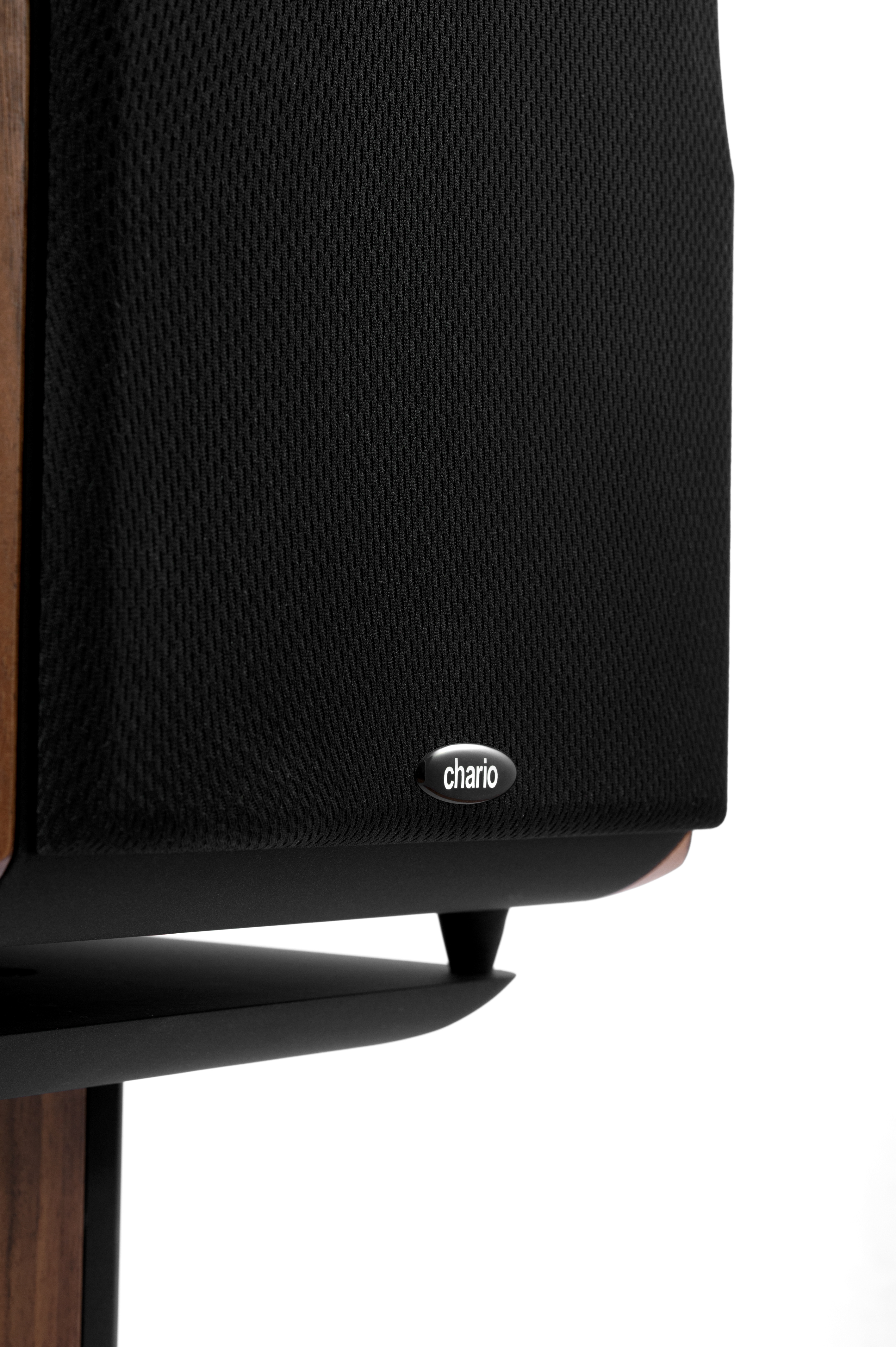
Listening sessions
Immediately obvious from the get-go in our listening sessions was that the Chario Constellation II Delphinus speakers were very good at converting electrical power into acoustic watts, so whereas we would usually doubt a ‘90dBSPL’ specification for such a small bookshelf speaker, the Delphinus sounded every bit of this rating.
This is good news not only because high-efficiency speakers sound more ‘exciting’ than lower-efficiency ones, but also because this efficiency means you’ll get the highest performance possible from your amplifier, because more of its power will be going into generating sound in your room, and less on raising the temperature inside the cabinet by heating up the drivers’ voice coils.
As we kind of suspected from the compliance of the bass driver (it’s quite ‘springy’ under the fingers) bass lines also had quite a spring to their step – there’s nothing stodgy about the bass delivery of these speakers: It’s bright, bouncy, beautifully paced, with a depth to it that in a dealer’s showroom might have you looking around for a hidden subwoofer.
This was particularly evident listening to the organ and double-bass on Heavenly Voices, from ‘Lightness of Dark’ (Fiona Joy Hawkins and Rebecca Daniel), but the lower octaves of Hawkins’ piano are also accurately realised. A track like this would be nothing without ‘heavenly voices’, and these (supplied by the aforementioned) also perfectly revealed the purity and accuracy of the Delphinus’ midrange sound.
The speed of the cone, and the match it is with the tweeter were illustrated by the immediacy and dynamism of the piano sound on the track that follows (Ghosts Insanity Angels), although we constantly had to remind ourselves that it was composed by Hawkins, and not Michael Nyman.
This speed and dynamism are complemented by the superb warmth of the midrange sound, no better examplared than if you audition Katie Melua’s oddly named (Belfast) Penguins and Cats. You can also use this track to admire the sweet, pellucid high-frequency delivery of the Delphinus IIs’ tweeter. Make sure you listen off-axis too, because its dispersion is particularly good, no doubt partially due to that horn.
Well-recorded acoustic guitar is also a joy to hear when listening to these Charios. Melua’s album is as good as any to try this out, though you should choose tracks that she herself has produced. If you don’t have her playlist handy, any well-recorded acoustic guitar will suffice to prove the point.
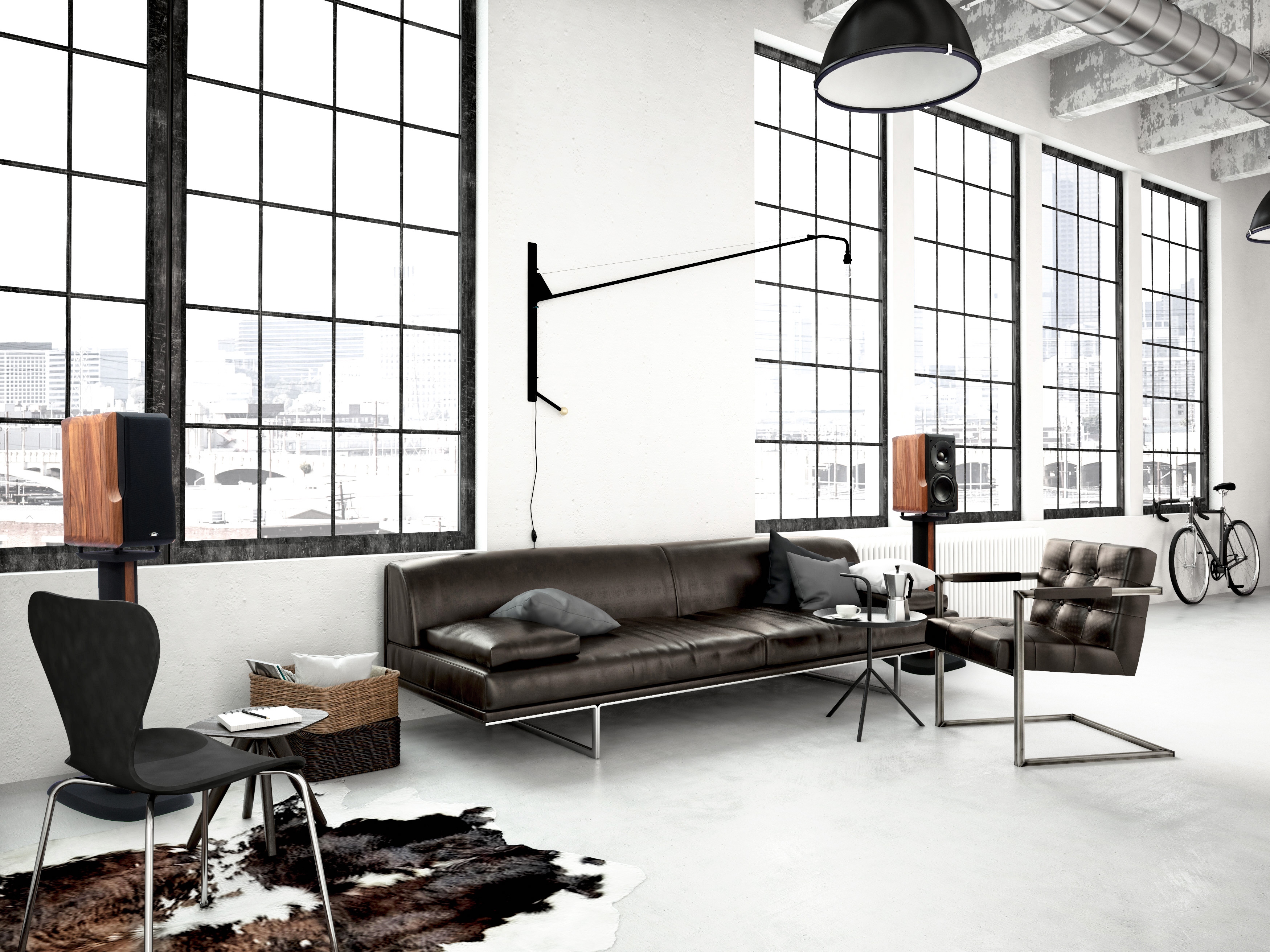
Final verdict
It’s always nice to be able to recommend speakers that have won awards, and in this case, we can report that the Chario Constellation II Delphinus is the current holder of the 2020 award for ‘Loudspeaker of the Year AU$1,000–5,000’ bestowed by Australian Hi-Fi Magazine’s sister publication, Sound + Image. And seeing that you’re going to get quite a lot of change from that upper figure, that makes these Charios something of a ‘Best Buy’ as well!
Lab test results
Newport Test Labs measured the overall in-room frequency response of the Chario Constellation II Delphinus being as 80Hz to 20kHz ±3dB, as shown by the trace on Graph 1, which is the averaged in-room response measured using pink noise, with capture smoothed by a third-octave filter.
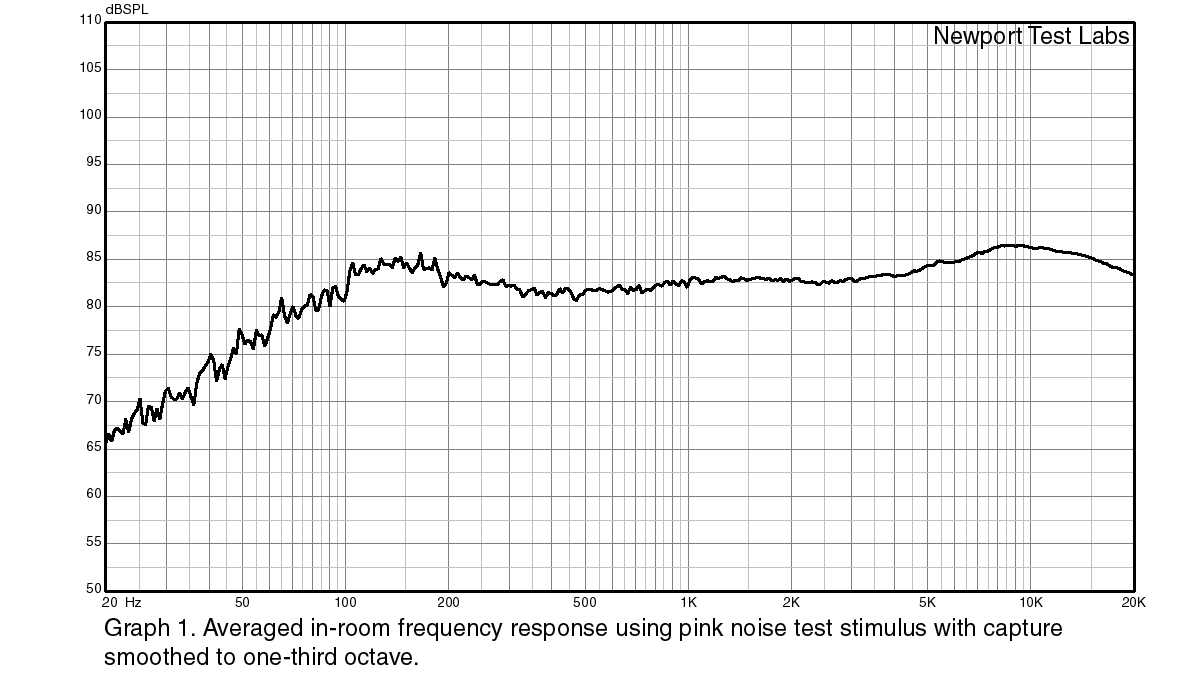
You can see that within these ±3dB parameters, the response is quite flat across the midrange area, from around 200Hz up to 4kHz, but the response is elevated both below 200Hz and above 4kHz. From 4kHz it rises to be +4dB at around 8–10kHz, after which it rolls off smoothly to 20kHz. In the bass end, there’s a boost peaking at around +2.5dB between 100 and 200Hz. The response rolls off smoothly below 100Hz.
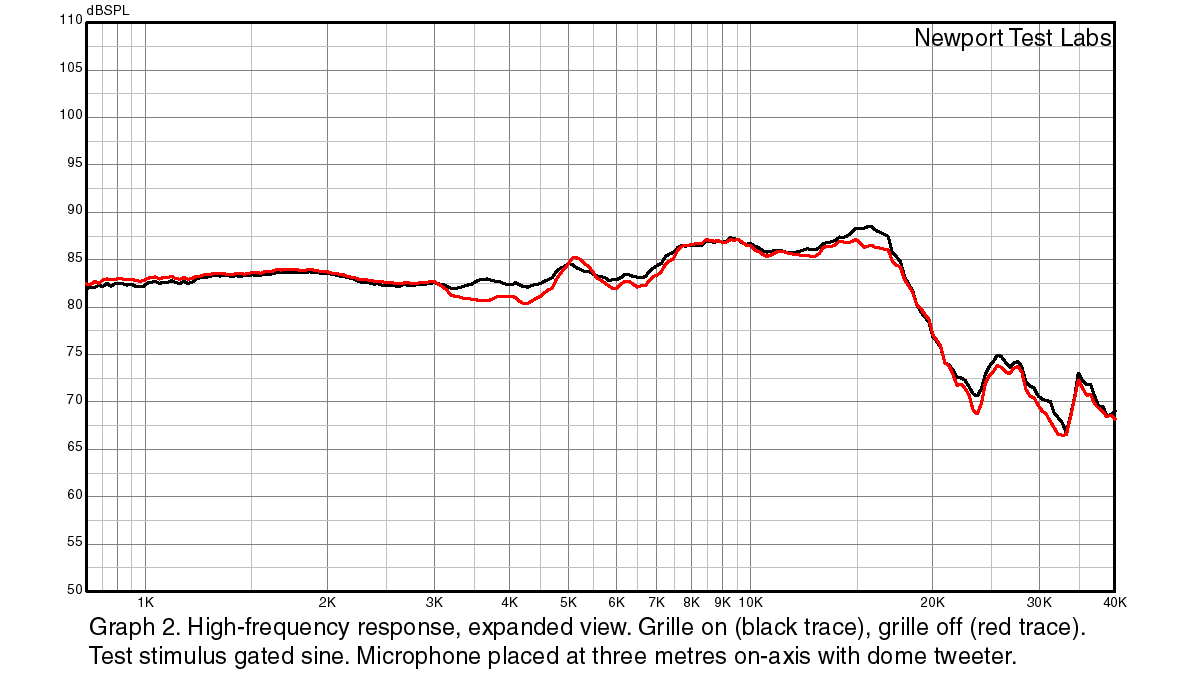
Graph 2 shows the high-frequency response of the Chario Constellation II Delphinus in greater detail. This response is purely anechoic, and with much higher resolution than the trace in Graph 1 and with no smoothing.
Two traces are shown, with the black trace showing the frequency response without the front grille fitted, and the red trace the frequency response when the grille is used.
When used without the grille, you can see that the Chario Constellation II Delphinus’ midrange is indeed smooth out to 4kHz after which it rises continuously with a small lift at 5kHz, a larger one at around 8–10kHz after which it continues rising to be around +6dB at 16kHz before rolling off to be 5dB down at 20kHz.
The red trace shows that the grille is mostly acoustically transparent, but does introduce a –2dB dip between 3.2kHz and 4.5kHz and causes the response above 14kHz to drop off a little earlier than it does when the grille is not used, but has no effect on response above 17kHz.
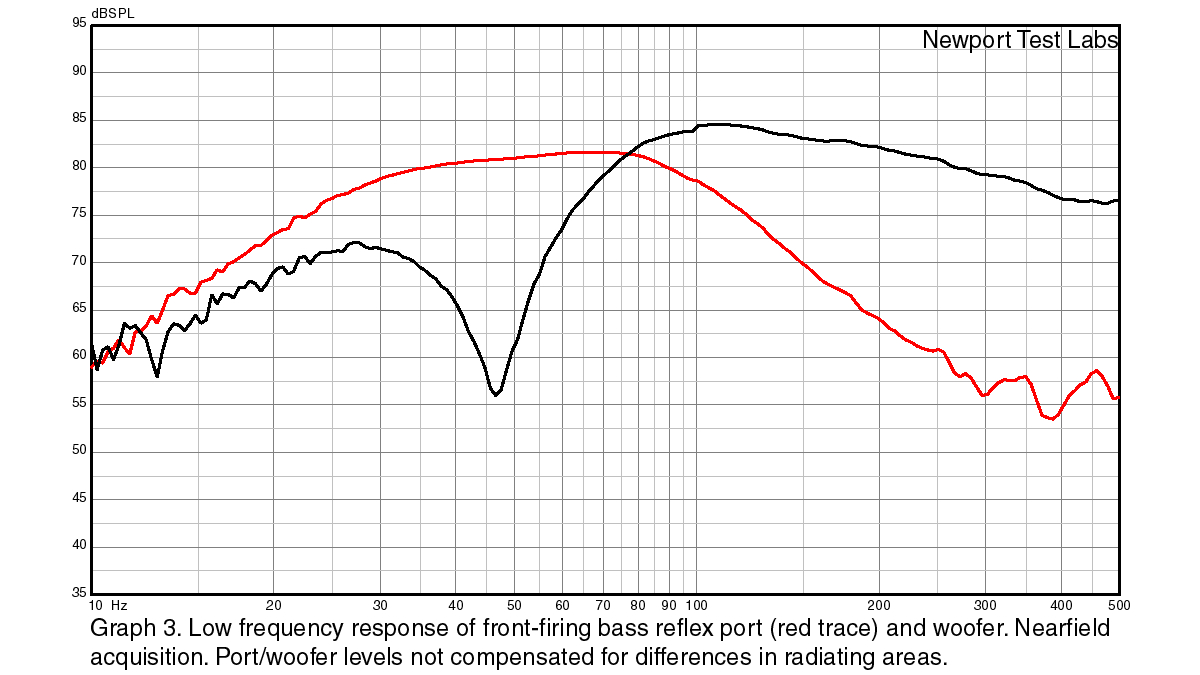
The low-frequency response of the Chario Constellation II Delphinus, as measured by Newport Test Labs and depicted in Graph 3, above, shows a rather unconventional port tuning (red trace), which means the port really has no discernable ‘peak’ and delivers appreciable output over a very wide bandwidth, one that extends from at least 25Hz up to 120Hz. The response of the bass driver (black trace) rolls off sharply below 100Hz to a minima at 47Hz.
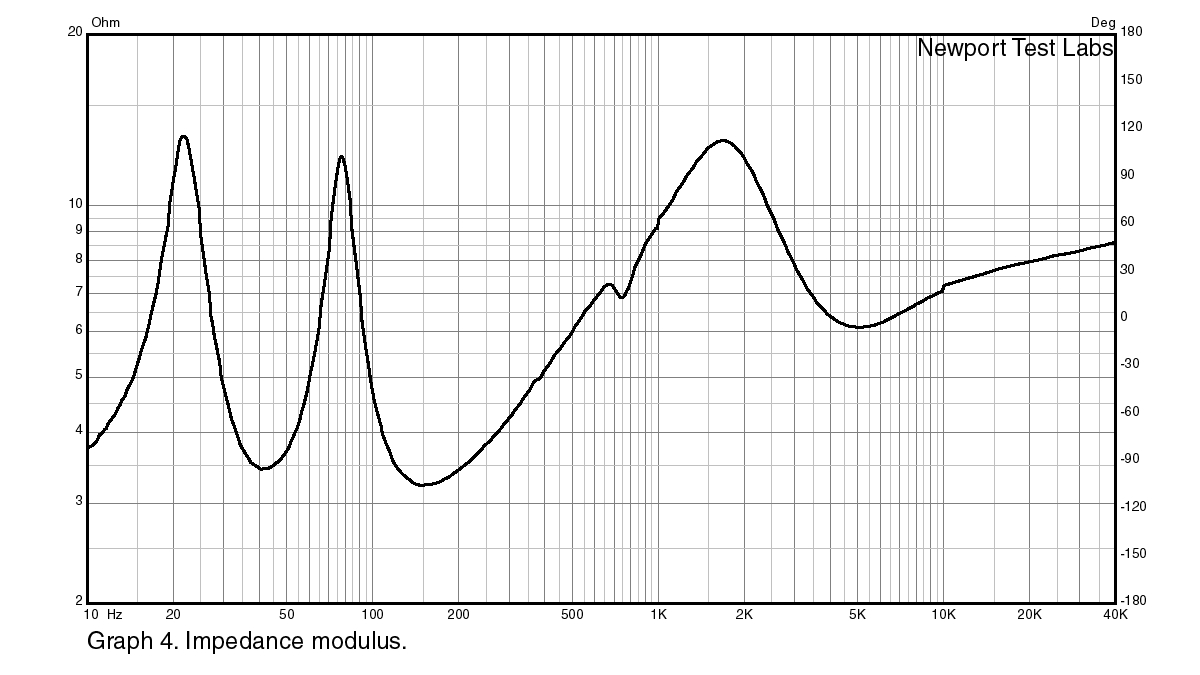
The impedance of the Chario Constellation II Delphinus, as measured by Newport Test Labs, is shown in Graph 4 and shows classic bass-reflex tuning, with two resonant peaks, the higher one at 78Hz (around 12Ω) and the lower at 23Hz (around 14Ω) with the impedance of the ‘saddle’ between them at around 40Hz dipping down to 3.5Ω.
This is lower than both Chario’s claimed nominal impedance (of 4Ω) and also its stated minimum impedance (of 5.8Ω). According to Newport Test Labs’ graph, the minimum impedance is 3.2Ω (at 150Hz). You can see there’s a significant resonance visible on the trace at around 700Hz. This turned out to be the result of interaction between the bass driver and the reflex port.
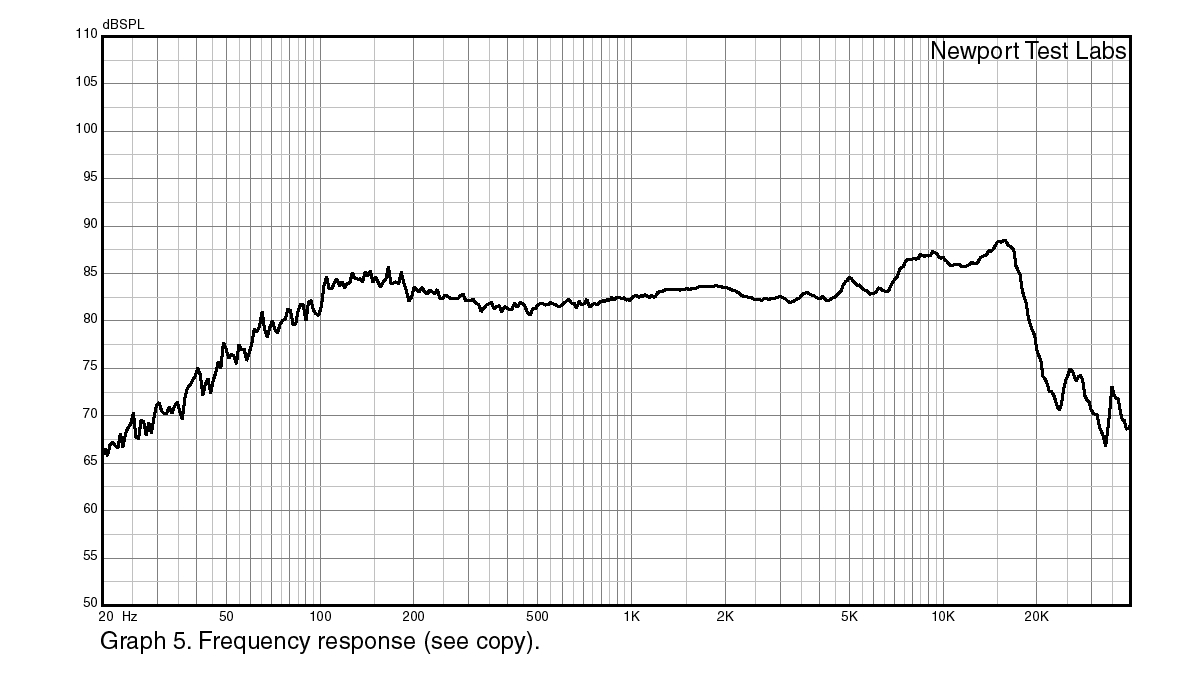
Graph 5 shows the overall frequency response of the Chario Chario Constellation II Delphinus as obtained by splicing the low-frequency in-room response to the anechoic high-frequency response. You can see that overall, the response extends from 50Hz to 20kHz ±5dB.
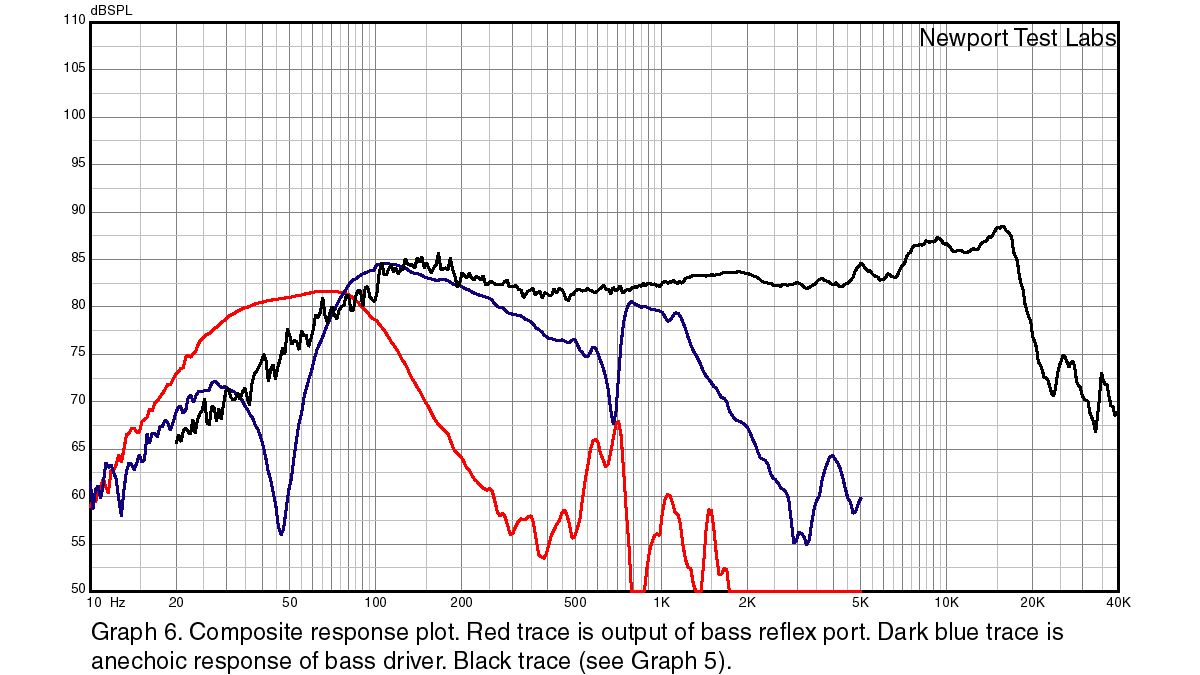
The final graph in the series is a composite on which the upper measurement range for the bass/midrange driver and port has been extended and we can now see the interaction between the bass/midrange driver and the reflex port that caused that resonance on the impedance trace.
Despite the interaction between the two there seems to be no effect on the frequency response, as you can see by looking at it immediately above where the traces intersect, so we would assume that although it’s obviously measurable, it’s not actually audible.
Newport Test Labs measured the sensitivity of the Chario Constellation II Delphinus at 89dBSPL at one metre for a 2.83Veq input, which is a little higher than we would have expected from a small two-way design.
Australian Hi-Fi is one of What Hi-Fi?’s sister titles from Down Under and Australia’s longest-running and most successful hi-fi magazines, having been in continuous publication since 1969. Now edited by What Hi-Fi?'s Becky Roberts, every issue is packed with authoritative reviews of hi-fi equipment ranging from portables to state-of-the-art audiophile systems (and everything in between), information on new product launches, and ‘how-to’ articles to help you get the best quality sound for your home. Click here for more information about Australian Hi-Fi, including links to buy individual digital editions and details on how best to subscribe.
